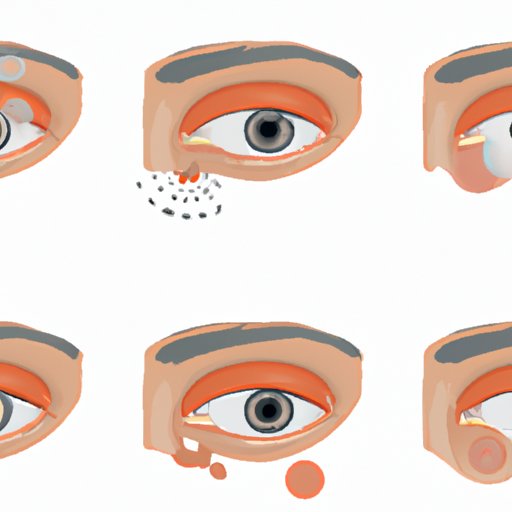
I. Introduction
Have you ever experienced a small, painful bump on your eyelid that you couldn’t help but rub? If so, you’ve likely had an eye stye. Also known as a hordeolum, an eye stye is a common eye infection that affects people of all ages and genders. In this article, we’ll explore the causes of an eye stye and share natural remedies and prevention tips to help you treat and avoid this pesky problem in the future.
II. Treatment options
One of the most effective ways to treat an eye stye is by applying a warm compress. Soak a clean cloth in warm water and hold it against the affected eyelid for 5-10 minutes, 3-4 times per day. This will help to relieve pain and encourage the stye to drain naturally.
If your eye stye is particularly stubborn, your doctor may prescribe an antibiotic ointment or oral medication to help clear up the infection. Over-the-counter pain relievers, such as ibuprofen or acetaminophen, may also help to alleviate discomfort.
III. Natural remedies
If you prefer to use natural remedies, there are several options available. Chamomile tea bags can be applied to the affected eyelid as a warm compress, as chamomile has anti-inflammatory properties that can help to reduce swelling and pain. Aloe vera gel can also be used as a natural anti-inflammatory agent. Simply apply a small amount of the gel to the stye and leave it on for 15-20 minutes, 2-3 times per day.
Essential oils, such as tea tree, lavender, and peppermint, can also be effective in treating eye styes. However, it’s important to dilute these oils properly and avoid getting them directly in your eye. Mix one drop of essential oil with a tablespoon of coconut or olive oil and apply a small amount to the affected eyelid with a cotton swab.
IV. Prevention tips
The best way to deal with an eye stye is to prevent it from occurring in the first place. Maintaining good hygiene practices, such as washing your hands regularly and avoiding touching your eyes with dirty hands, can help to reduce your risk of infection. Additionally, avoid sharing makeup and personal hygiene products, as bacteria can easily be passed from person to person.
V. Medical treatment
If your eye stye does not improve within a few days or is accompanied by severe pain, vision changes, or fever, it’s important to seek medical treatment. Your doctor may examine your eye and recommend prescription antibiotic treatment or, in rare cases, surgical intervention to drain the stye.
VI. Personal testimony and additional advice/resources
One person who has experienced success treating an eye stye shared their story: “I had a stye on my eye and I was able to get rid of it by using a warm compress and applying tea tree oil diluted with coconut oil. It was gone within a few days and I haven’t had one since!”
It’s important to remember that everyone’s experience with an eye stye may be different, and it may take some trial and error to find the right treatment option for you. Consult with your doctor or eye care professional for additional advice and resources.
VII. Conclusion
In conclusion, an eye stye can be a painful and inconvenient problem, but there are many treatment options available to help alleviate symptoms and prevent further infections. Whether you prefer natural remedies or medical treatment, the most important thing is to take action and seek treatment if needed. By following good hygiene practices and taking care of your eyes, you can reduce your risk of developing an eye stye and enjoy healthy, clear vision.





